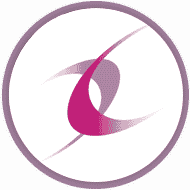Breast cancer is unfortunately all too common in women – in fact, one in eight women will be diagnosed with breast cancer during their lifetime. The risk increases with age – – in the absence of a significant family history of breast cancer (see below) the risk at age 30 is one in over 200; at age 40 one in 65; at age 50 one in 40, at age 60 one in 28 and at age 70 one in 24. With so many women being impacted by breast cancer, every woman needs to know more about the disease, what to look for, and what to do if you have any concerns. That’s because breast cancer can be successfully treated when detected early. Meeting regularly with your women’s health provider in order to arrange surveillance is the best way to be proactive. Here’s a quick guide to breast cancer and how you can maintain good breast health.
The Basics of Breast Cancer
Daily, your body’s cells reproduce and replace themselves, forming healthy new cells. Most cancers are the result of this process going awry, with certain cells in your body have growing out of control. With respect to breast cancer in particular, this process can occur most commonly in areas of the breast such as the milk ducts or glands and the surrounding connective tissue. When cells begin to grow out of control, they form a mass that, depending on where in the breast it occurs, can’t be felt until it has reached a significant size. If neglected, these malignant cells can spread to adjacent lymph nodes as well as other parts of the body. Since the majority of growths in the breast are non-cancerous, they require prompt assessment by your physician with the appropriate diagnostic procedure arranged.
Screening for Breast Cancer
You’ve probably heard advice like screening yourself regularly for breast cancer or getting a mammogram. There are several modalities utilized in order to detect breast cancer early.
Breast Self-Exams
A breast self-exam should be performed once per month by adult women of all ages. Many women have ‘lumpy bumpy’ breasts, so getting familiar with your usual lumps and bumps is key. Prior to menopause, the exam should be performed shortly after the menses have stopped (at that time of the month, the breasts are typically less ‘lumpy & bumpy’). During a self-exam, you’ll look and feel for any unusual feeling lumps in your breasts. This can be done by lying down or standing with an arm over your head. If anything unusual is suspected, contact your physician for further assessment.
What to Look for When Screening Your Breasts
If you experience any of the following concerns, you should see your women’s health provider right away:
- Skin on the breast or nipple that is red, flaky, dry, or thickened.
- Retracting nipples
- Dimpled skin
- Swelling
- A lump or mass
- Pain in the breast or nipple
- Discharge from the nipple that is not milk.
- Swollen lymph nodes near the collarbone or underarm
Professional Breast Exam
One part of your well-woman visit is a breast exam by your gynecologist or OB/GYN. A well-woman visit typically occurs yearly and is recommended for women of all ages. It’s also an opportunity to obtain requisitions for the surveillance most appropriate for your specific age and situation.
Mammograms
In the absence of a significant family history of breast cancer, all women should begin having annual mammograms annually beginning at age 40. As you approach that age, your gynecologist or OB/GYN will help you take the next step in getting your first mammogram.
How to Maintain Good Breast Health
Breast cancer can’t be completely prevented, but there are ways to reduce your risk. These include:
- Being physically active: The American Cancer Society recommends getting 150-300 minutes of moderate exercise per week, which equates to about 20-30 minutes of walking every day. This is especially important for post-menopausal women.
- Know your family history: You may be at increased risk of breast cancer if a relative is affected by it. Your women’s health provider typically documents a complete family history at your initial visit.
- Limit alcohol: Alcohol is a known risk of breast cancer. Although it’s best to avoid alcohol altogether, limiting intake is ideal for women.
- Maintaining a healthy weight: Being overweight or obese (especially after menopause) can increase your risk of breast cancer.
- Being screened regularly: Regularly screening with breast self exam, annual professional breast exam and regular mammography are the best ways to reduce your risk.
Schedule a Well-Woman’s Visit
At Carnegie Women’s Health, our team of award-winning gynecologists and obstetricians can help you learn more about your breast cancer risk and take the right steps to remain healthy for a lifetime. To schedule an appointment, contact our office today by calling or filling out our online form.

